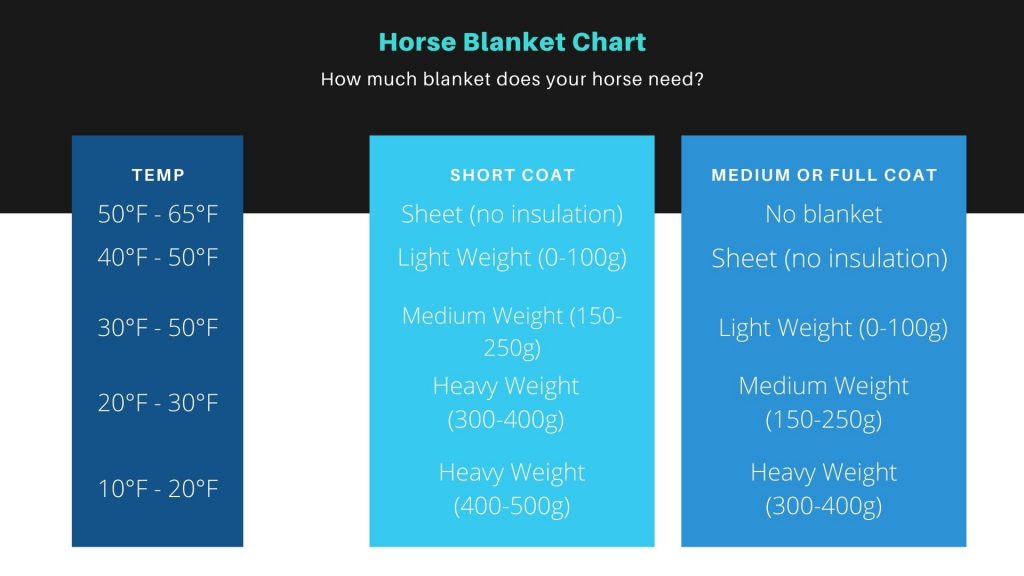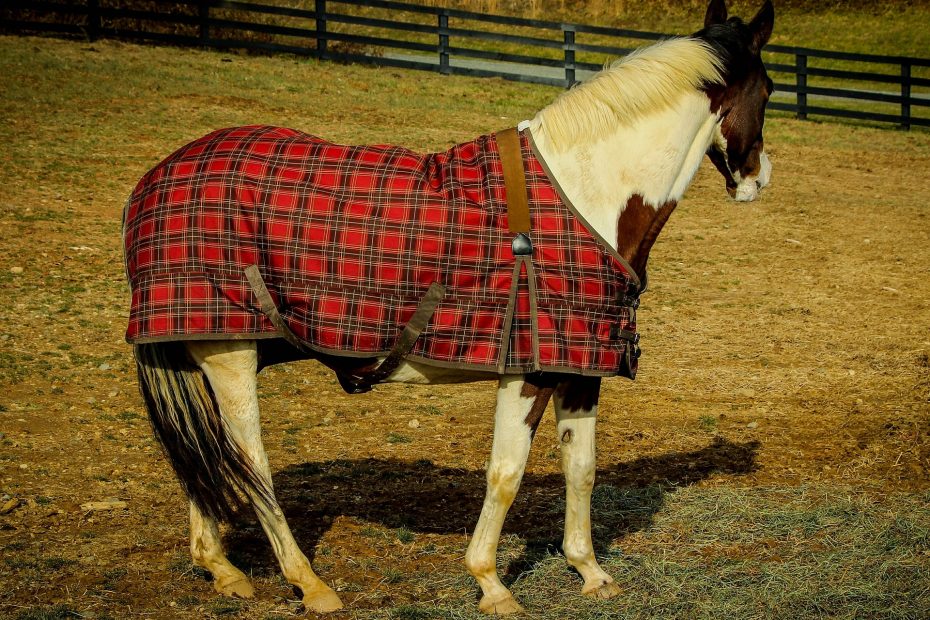How Horses Stay Warm
Have you ever rubbed your hands thru the winter hair coat of a horse and watched your fingers disappear in the fluffy hairs? A horse’s winter hair coat is longer and coarser than its summer hair coat. Horses trap warm air close to their body to insulate them from the cold by making each hair strand stand up rather than lay down. A horse also uses the energy (heat) necessary to digest forage in the hindgut to raise their core temperatures from the inside out.
Lowest Critical Temperature (LCT)
Even with a heavy hair coat, and plenty of forage, there is a point that horses need assistance in beating the freezing temperatures. This point is called the lowest critical temperature. LCT is the lowest temperature at which a horse can maintain his core temperature using insulation and energy from forage. Each horse is an individual, and the LCT may vary from one horse to the next. Several factors can affect a horse’s lowest critical temperature.
Should You blanket or Not Blanket Your Horse? — Factors to Consider When Choosing To Blanket Your Horse
Ask different horse owners, and you will get different answers. The answer depends on the individual horse. The following are things to consider when deciding if you should blanket or not blanket your horse:
- Hair coat: Horses with full health winter coats will most likely be okay without a blanket. However, if their coat is unhealthy, clipped, or kept smooth and short for competition reasons, they will need a blanket.
- Living situation: Horses with a permanent shelter to avoid the weather are usually okay without a blanket depending on the region. If the temps drop way below what is expected in your region or a horse is new to the climate, they will most likely need a blanket of some sort.
- Body condition: Horses who are unhealthy, hard keepers, or naturally thin will burn extra energy to keep warm. They will benefit from a blanket. An easy keeper and healthy horses will usually do okay without a blanket.
- Age: Horses are like people, in the fact that the older we get, the harder it is to regulate our body temperature. Senior horses often need blankets.
- Geography: The geography of an area will affect a horse’s LCT. A horse raised in the north will withstand colder temps than a horse raised in the south.
The following blanketing chart gives a general temperature range as to what to wear at what temperature. It is only a basic guideline, and the above criteria need to be considered for each horse.

Types of Horse Blankets
Turnout Sheets and Turnout Blankets:
Both turnout sheets and turnout blankets are waterproof and designed to be worn outside. The sheets are lightweight, without any fill.
The blankets have filling, similar to a quilt, making them warmer. If your horse is wearing the blanket or sheet outdoors, you want it to be waterproof.
If it is not waterproof, the blanket can get damp when the horse lays down. A wet blanket will make him colder than he would be without it.
Stable Sheets and Stable Blankets:
As the name implies, these are designed to be worn inside. They are not waterproof. If you are looking for a blanket to use both inside and outside, it is advised to go with a turnout sheet or blanket.
How Warm is That Horse Blanket?
The filling used in horse blankets is measured in grams. More filling equals more warmth. Lightweight blankets (sheets sometimes fall under this category) are 0-100 grams, medium weight are 150-250 grams, and heavyweight are 300+ grams.
Measuring for a Horse Blanket:
It can be aggravating to order a blanket, and it doesn’t fit. Here is how to get the correct size:
1. use a cloth tape
2. measure from the center of the chest, along the side, to where the butt cheek meets the tail.
3. Be sure to the tape is level and taunt
4. The measure in inches is the size (some manufactures run large and some will run small, so be sure to check reviews)
Best Horse Blankets — Our Favorite Horse Blankets
Top Choice for Turnout Sheet:
Tough 1 600 Denier Waterproof Horse Sheet
This turnout sheet is made with 600 denier waterproof nylon with a 70 denier lining. This is a good choice for those spring nights when the weather is warm in the day but still chilly at night, especially if rain is in the forecast. It can be used year-round in warmer climates. However, it is not breathable and not recommended for temps over 50 to 60 degrees.
Top Choice for Turnout Blanket:
HILASON 1200D Poly Waterproof Turnout Winter Horse Blanket Turquoise
This blanket has a 1200 Denier Polyester Waterproof and breathable ripstop outer shell. The high-grade Pollygood Brand fill is 400 grams. A highly durable Persian twisted woven taffeta makes up the inner lining. This blanket has been lab-tested to withstand over 10,000 PSI of air and water pressure, protecting your horse in extreme wet and cold. The tail flap is also insulated to prevent cold air from getting in.
Top Choice for Stable Sheet:
AMIGO Horseware Mio Lite Turnout Sheet
This sheet is an excellent choice for the stable or outside. The outer shell is made of a strong 600 Denier polyester that is waterproof and breathable. It can be used alone or as a liner to another blanket. It is a good fit for most horses. We recommend this sheet as a stable sheet because it is very thin and can tear on fencing or other outdoor hazards.
Top Choice for Stable Blanket:
Country Pride Squall 1200D HVY Wgt Bellyband Stable Blanket
Made of 1200 Denier Cordura outer shell with 550 gm poly-fill, this blanket is a good choice for those cold winter days and nights. There is no front enclosure, so your horse will have to be okay with the blanket going over their head. The belly band keeps the blanket from slipping or turning. Some horses may need to get used to the sound of the Velcro on the belly band.
